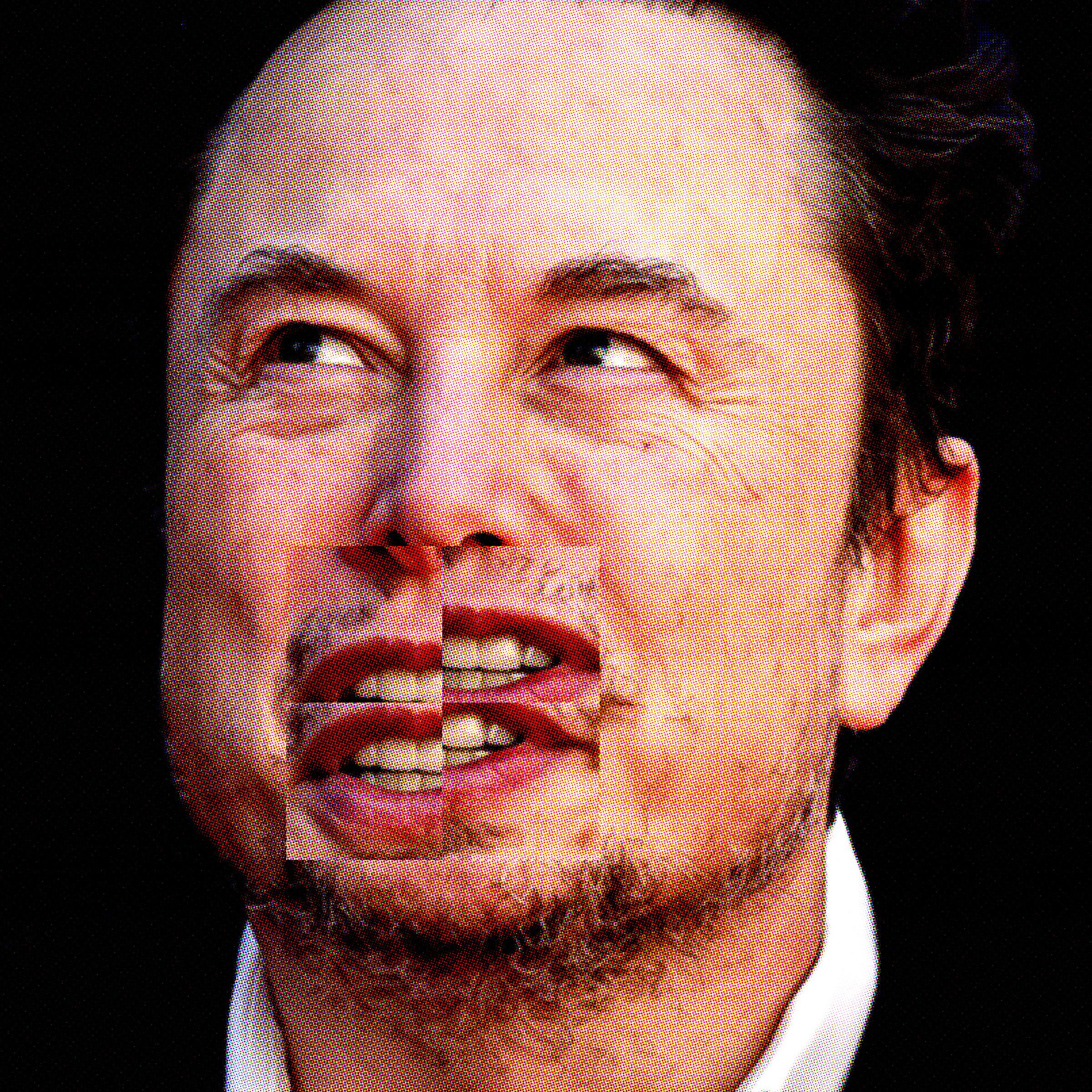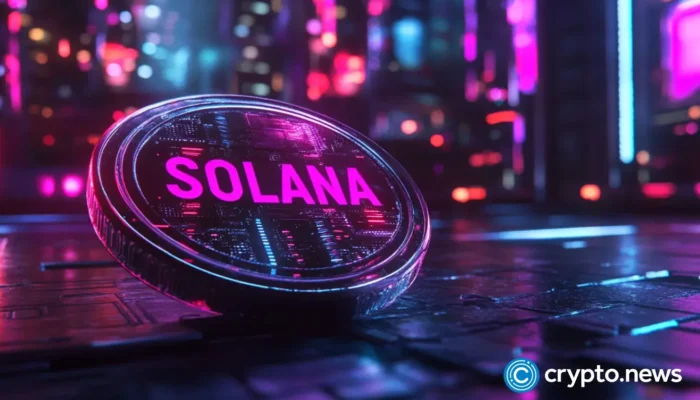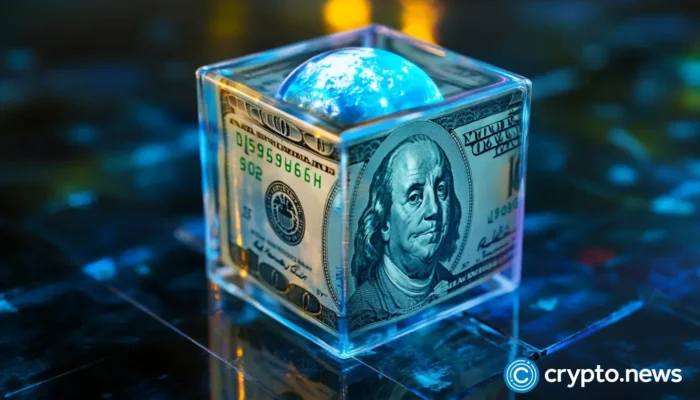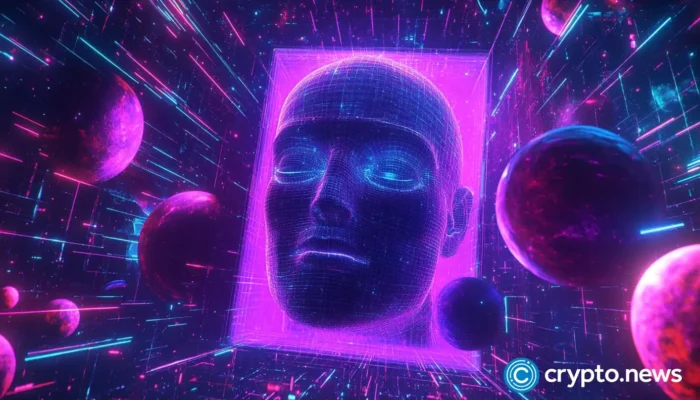“My predictions about achieving full self-driving have been optimistic in the past,” Musk admitted to investors in 2023. “I’m the boy who cried FSD.” He certainly has. Many times. Indeed, Musk has a long history of making outlandish promises and unfulfilled predictions about his businesses—and it’s a habit that seems hard to break.
On the Tesla earnings call with investors in late April, Elon Musk reportedly sounded aggrieved as he was forced to acknowledge a woeful 71 percent dip in profits. On the defensive, and seemingly grasping for positive spin among the dire results, Musk promised something implausible: The carmaker would become the world’s leading robotics company, ushering in the “closest thing to heaven we can get on Earth.” (He has since doubled down on this, stating that demand for his robots will be insatiable, and earlier this month he claimed that robots will number in the tens of billions and be like “your own personal C-3PO or R2-D2, but even better.”)
Elon Musk at Tesla’s HQ in San Carlos, California, 2006.
Photograph: Joanne Ho-Young Lee/Getty Images
On the call, despite tanking worldwide sales for his company’s aging cars and cratering demand for the Cybertruck, Musk asserted the “future for Tesla is brighter than ever.” He batted away the precipitous fall in sales as merely “near-term headwinds,” urging investors to ignore the non-autonomous-car business and assess the “value of the company” on “delivering sustainable abundance with our affordable AI-powered robots.”
Still, even though Musk has a long history of broken promises, investors seemed soothed by tales of crushing market domination for Tesla, not as the car company it is today, but as the robotics behemoth Musk claims it will soon become.
WIRED examined the history of Musk’s pledges on everything from Full Self Driving, Hyperloop, Robotaxis, and, yes, robot armies, with a view to reminding ourselves, his fans, and investors how reality in Elon’s world rarely matches up to the rhetoric. Tellingly, Musk’s fallback forecast of “next year” turns up repeatedly, only to be consistently proven wrong.
“My predictions have a pretty good track record,” Musk told Tesla staff at an all-hands meeting in March. Here’s a chronological look at that track record.
19 Years of Broken Promises
August 2006: False Start
“[Our] long term plan is to build a wide range of models, including affordably priced family cars,” wrote Elon Musk in the Tesla Secret Master Plan hosted on the Tesla website 19 years ago. “When someone buys the Tesla Roadster,” he added, “they are actually helping pay for development of the low-cost family car.”
In Master Plan, Part Deux, written 10 years after the first plan, Musk reiterated that, even though Tesla had not yet delivered on the 2006 promise, it still planned to build an “affordable, high-volume car.” 2016 came and went without an entry-level car. In January this year, Musk said that—finally—Tesla would start producing the affordable model in the second half of 2025.
Musk in 2006 with a first generation Tesla Roadster.
Photograph: Chris Weeks/Getty Images
However, in April, Reuters reported that Tesla had scrapped plans for the cheap family car. Musk posted on X that “Reuters is lying (again),” eliciting the Reuters response that “[Musk] did not identify any specific inaccuracies.” A Tesla source told Reuters that instead of the long-promised cheap family car, “Elon’s directive is to go all in on robotaxi.”
August 2013: Hyperloop Hype
While he did not directly own any of the Hyperloop companies, in a 58-page white paper titled “Hyperloop Alpha”, Musk wrote of a “new open source form of transportation that could revolutionize travel.” It didn’t. The Hyperloop was shuttered in 2023, 10 years after it was first proposed—but even as late as 2022, Musk was still promising that Hyperloop could go from Boston to New York City “in less than half an hour.”
A form of magnetic levitation (maglev) capsule in an air-evacuated steel tube on stilts, Hyperloop was described on the company’s website as being an “ultra-high-speed public transportation system in which passengers travel in autonomous electric pods at 600+ miles per hour.” This description has since been removed but was documented by Electrek. Engineers from Tesla and SpaceX worked on Hyperloop for two years before the project was taken up by other companies in 2017.
Musk said at a tech conference in 2013 that his Hyperloop idea—which wasn’t new; George Medhurst of London first discussed the idea of moving goods pneumatically through cast-iron pipes in 1799—would be a “cross between a Concorde and a railgun and an air hockey table.” Hyperloop One—later Virgin Hyperloop—raised around $450 million from various investors, including Richard Branson, with a passenger test achieving a speed of 107 mph, almost 500 mph less than Musk originally proposed.
Cynics have long alleged Musk’s floating of Hyperloop was a ruse to kill California’s high-speed rail project, a belief boosted by a claim in Walter Isaacson’s 2023 authorized biography of Musk. “Musk told me that the idea originated out of his hatred for California’s proposed high-speed rail system,” wrote Isaacson, claiming that Musk thought that “with any luck, the high-speed rail would be canceled.”
The interior of a Hyperloop tube after the first test of a propulsion system at the Hyperloop One Test and Safety site on May 11, 2016 in North Las Vegas, Nevada.
Photograph: David Becker/Getty Images
September 2013: Driverless Pioneering
In 2013, Tesla posted a job opening for an Advanced Driver Assistance Systems Controls Engineer who will be “responsible for developing vehicle-level decision-making and lateral and longitudinal control strategies for Tesla’s effort to pioneer fully automated driving.” Musk says: “We should be able to do 90 percent of miles driven [autonomously] within three years.”
October 2015: Full Autonomous Driving
“Tesla will have a car that can do full autonomy in about three years,” promises Musk. Then in December 2015: “We’re going to end up with complete autonomy,” pushes Musk, “and I think we will have complete autonomy in approximately two years.”
In January 2016: “I think that within two years you’ll be able to summon your car from across the country,” muses Musk.
June 2016: “I consider autonomous driving to be a basically solved problem,” says Musk. “We’re less than two years away from complete autonomy.”
November 2018: “I think we’ll get to full self-driving next year,” Musk tells Kara Swisher.
A media test drive of a Tesla Model S car equipped with Autopilot in Palo Alto, California in October, 2015.
Photograph: David Paul Morris//Getty Images
October 2016: Autonomous Charging
“Our goal is, and I feel pretty good about this goal, that we’ll be able to do a demonstration drive of full autonomy all the way from LA to New York—from home in LA to let’s say dropping you off in Time Square in New York, and then having the car go park itself—by the end of next year,” vows Musk, who can’t resist upping the ante by stressing that this cross-country journey will be made “without the need for a single touch, including the charger.”
A snake-like automatically-deployed charger plugged by Musk the year prior was trialled, but never made it into production.
Then, less than a year later, in April 2017: “I think we’re still on track for being able to go cross-country from LA to New York by the end of the year, fully autonomous,” Musk tells TED Conference curator Chris Anderson in a fireside TED chat.
“Still on for end of year,” says Musk of the coast-to-coast autopilot demo. “Just software limited,” he adds.
April 2017: Being Boring
Musk floats the idea of congestion-beating tunnels beneath cities with cars shot along on skates at 125 miles per hour. “By having an elevator … you can integrate the entrance and exits to [a] tunnel network just by using two parking spaces. And then the car gets on a skate. There’s no speed limit here, so we’re designing this to be able to operate at 200 kilometers an hour.”
This is the first outing for Musk’s Boring tunnel concept. The Boring Company was supposed to deliver an underground maze of tunnels where passengers could travel in autonomous vehicles at 150 miles per hour.
The goal, said Musk, was to build one mile of tunnel per week. “Finally, finally, finally, there is something that I think can solve the goddamn traffic problem,” boasted Musk.
So far, only Las Vegas has one short system, the 1.7-mile LVCC Loop. Forty feet below the Las Vegas Convention Center, the Boring Company’s tunnel opened in 2021 and currently takes paying passengers between three stations in chauffeur-driven Model Y Tesla cars which slow to just 15 miles per hour when the tunnels get congested.
Elon Musk at an unveiling event for the Boring Company Hawthorne test tunnel in Hawthorne, California, December 2018.
Photograph: Robyn Beck/Getty Images
August 2017: Brain Chips
Elon Musk founded Neuralink in 2016 with the aim of merging artificial intelligence with the human brain via an implantable interface. In 2017, the claim was that his Neuralink brain chip startup’s first product would be on the market “in about four years.”
In the second half of 2020 Musk shows the hardware’s ability to read the brain activity of a pig with a surgically implanted chip transmitting data wirelessly. He describes the AI-powered chip as “a FitBit in your skull with tiny wires” and then predicts the tech could one day cure paralysis and give the human race telepathy and superhuman vision.
In 2024, seven years after that initial four-year prediction, the first human trial subject receives a Neuralink implant (though some researchers show frustration over a lack of information about the study.)
November 2018: Special Delivery
“Probably technically be able to [self-deliver Teslas to customers’ doors] in about a year,” writes Musk on X.
January 2019: FSD Finally?
“When do we think it is safe for full self driving?” asks Musk on a Q4 earnings call. “Probably towards the end of this year.” Then just a month later, in February, he’s certain. “We will be feature complete [with] full self-driving this year,” promises Musk on an innovations podcast. “The car will be able to … take you all the way to your destination without an intervention this year. I’m certain of that. That is not a question mark.”
By April, Musk is repeating this claim, promising during a four-hour Tesla presentation billed as Autonomy Day, “We expect to be feature-complete in self-driving this year, and we expect to be confident enough … to say that we think people do not need to touch the wheel and can look out the window probably around the second quarter of next year.”
“In the future, any car that does not have autonomy would be about as useful as a horse,” Musk tells Lex Fridman on the MIT’s researcher’s podcast, also in April 2019. Full autonomy from a Tesla would arrive “very, very quickly,” Musk says, adding, “I think it will require detecting hands on wheel for at least six months.” Such detection is still required.
Two years later, in January 2021, Musk on an earnings call states: “I’m highly confident the car will drive itself for the reliability in excess of a human this year. This is a very big deal.” But by December, appearing for his third time on the Lex Fridman podcast, Musk is asked again when Tesla would solve Level 4 FSD. “It’s looking quite likely that it will be next year,” he says.
Fast-forward to May 2023 and Musk is telling CNBC’s David Faber “I mean, it does look like [full autonomy is] gonna happen this year.”
Auto enthusiasts check out the Tesla Cybercab at the annual LA Auto Show at Los Angeles Convention Center in Los Angeles, November 2024.
Photograph: Allen J. Schaben/Getty Images
April 2019: One Million Robotaxis
“We expect to have the first operating robot taxi next year with no one in them,” claimed Musk on Autonomy Day. “Next year for sure, we’ll have over a million robotaxis on the road,” he promises.
Fast-forward to April’s earnings call this year, and Musk says that Tesla will unveil its robotaxi service in Austin, Texas, next month. Initially a paid ride-hailing service with up to 20 Model Y vehicles supervised remotely, if it hits the June target this is a far cry from Musk’s 2019 expectation that Tesla would have 1 million driverless robotaxis on the road by the following year.
If a small number of Tesla’s robotaxis do turn up in Austin, people may be unwilling to be seen in the cars given the public backlash against Musk’s role at DOGE and his controversial public statements and salutes. Federal regulators are also sniffing around. On May 12 this year, it was revealed that NHTSA has written to Tesla asking for extensive details on the robotaxi rollout. “As you are aware,” the long letter to Tesla stated, “NHTSA has an ongoing defect investigation into FSD collisions in reduced roadway visibility conditions.”
July 2020: Level Five Is Alive
“I’m extremely confident that level 5–or essentially complete autonomy–will happen … this year,” Musk said in a video message at the opening of Shanghai’s World Artificial Intelligence Conference. “There are no fundamental challenges remaining,” he stated.
Then, in the following December, Musk shifts the goal line and doubles down. “I’m extremely confident that Tesla will have level 5 next year,” Musk tells Mathias Döpfner, the CEO of Business Insider’s parent company, Axel Springer SE. How confident? “100 percent,” replies Musk. Musk also tells Döpfner that a human will possibly step onto Mars by 2024.
As recently as April this year, Musk states on an earnings call: “We’ll start to see the prosperity of autonomy take effect in a material way around the middle of next year … There will be millions of Teslas operating autonomously, fully autonomously in the second half of next year,” he adds.
March 2025: Babysitting Robot Army
Musk has been promising Tesla would produce a humanoid robot—Optimus—since 2021. At an all-hands meeting earlier this year he promised this “robot buddy” would “clean your house, will mow the lawn, will walk the dog, will teach your kids, will babysit, and will also enable the production of goods and services with basically no limit.” He predicted that “hopefully” Tesla will be able to make about 5,000 Optimus robots this year. “That’s the size of a Roman legion,” he stated.
Musk then claimed Tesla would make “probably 50,000-ish [Optimus robots] next year.” He further claimed that Optimus “will be the biggest product of all time by far—nothing will even be close. It’ll be 10 times bigger than the next biggest product ever made. Ultimately, I think we’ll be making tens of millions of robots a year.” Mere seconds later, he upped the ante even further, stating that, no, Tesla would actually make “maybe 100 million robots a year.”
However, in April he told investors that production could be impacted by the restrictions on rare-earth metal exports China implemented in response to President Trump’s tariffs. There’s no date yet for the launch of Optimus.
Musk at a press conference in Beijing, China in October 2015 announcing self-driving features such as Autosteer for a select group of Model S beta testers (the driver still needs to hold the steering wheel).
Photograph: Getty Images
Finally Making Good?
“So many people are convinced [that Musk] is a miracle worker,” says auto journalist Ed Niedermeyer, author of the 2019 book Ludicrous: The Unvarnished Story of Tesla Motors. “People see his wealth on paper and assume there’s nothing he can’t do. As the world constantly rearranges itself in his favor, they keep believing in him. This cannot keep going forever.”
When it comes to his car business at least, Musk seems fully aware of what’s at stake. Perhaps this is driving his never-ending FSD optimism? My “overwhelming focus is on solving full self-driving,” he said during a June 2022 interview with three Tesla fanboys. “It’s really the difference between Tesla being worth a lot of money or worth basically zero.”
Earlier this year, Kelley Blue Book reporter Sean Tucker wrote: “Elon Musk is fond of telling investors that Tesla is now an automation company, not an automaker. But the company’s signature products are cars. Unless it can change its strategy to develop new products with widespread appeal, its high watermark as an automaker may be in the past.”
With plummeting sales and increased scrutiny, Musk may soon come to rue the fact that he hasn’t managed to make good on so many assurances since 2006 when he wrote, in a foundational pledge, that Tesla’s goal—still not delivered, and supposedly finally starting production next month—was to produce an affordable family car. Maybe next year?
Tesla did not respond to WIRED’s request for comment on this article.




